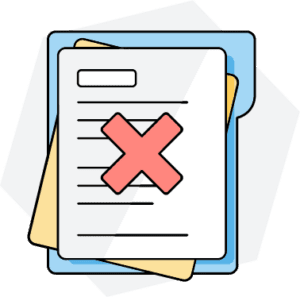Filing an auto insurance claim may seem intimidating, but it’s fairly straightforward if you follow these steps:
- Gather information and documentation
- Contact your insurance company
- File the claim
- Get your vehicle repaired
Navigating the aftermath of a car accident can be a daunting experience, but knowing how to file a car insurance claim can significantly ease the process. Whether you’ve been involved in a minor fender bender or a more serious collision, understanding the steps to initiate an insurance claim is crucial for a smooth and efficient resolution.
Table of Contents
Understanding Auto Insurance Claims
Auto insurance has several coverage parts that could apply to your claim, depending on the accident and damages. It is essential that you understand your policy and all of its inclusions and exclusions before filing a claim.

- Liability insurance: Liability insurance is protection for bodily injury and property damage that occurs by you. If you are at fault in an accident and someone is injured or you damage their property — such as a car, building, or electricity pole — this coverage will apply.
- Collision insurance: If you are at fault in an accident, collision coverage will pay to repair or replace your car. You may also use this if someone hits your car and leaves the scene of the accident.
- Personal injury protection: Regardless of fault, personal injury protection covers medical expenses pertaining to injuries as a result of an accident.
- No-fault auto insurance laws: Some states have laws for no-fault insurance, a type of personal injury protection that applies regardless of fault. You should determine how your state handles auto claims.
1. Gather Information and Documentation
The first thing to do when you have been involved in an accident is to ensure everyone is okay and check if anyone needs medical attention.
Then, you will want to gather the following information:
- Insurance details for everyone involved
- Vehicle descriptions of vehicles
- Driver names
- Witness contact information, if applicable
- Police report or the name of the officer you speak to, if applicable
When you file a claim, all of this documentation will help make the process go smoothly.
2. Contact Your Insurance Company
You should report an accident to your insurance company immediately after it happens and provide as much detail as possible. Most insurance companies will have a claims number or website on the back of the auto-id card, or you may use their app if they have one.
Before you reach out to your insurer, review your insurance policy so that you can ask the appropriate questions and ensure you fully understand your coverage. Knowing what is covered, what your deductibles are, and how to file a claim is crucial. Understanding how your policy will respond will prevent any surprises during the claims process.
3. File a Claim
After you gather your documentation and find the correct contact information for your insurance company, you are ready to file your claim. You can typically submit it either online or over the phone and will need to provide the following information:

- Specific details, such as when and where the accident happened
- A breakdown of the actual event
- Information on the other involved parties, including any witnesses
- Any photos or videos you took
- A police report, if applicable
Once you have submitted the claim, you will be assigned to an adjustor who will hold your hand through the claims process. They will be your point person for any questions or concerns. They are also responsible for determining the value of the repairs. The claims process can take anywhere from a few days to a few weeks, depending on the accident and how much investigation is needed.
Cooperate With the Investigation
Insurance adjusters investigate a certain number of accidents on behalf of insurers. Their responsibilities include assessing the incident’s details, inspecting the damage, and determining liability. The role of an insurance adjuster is crucial to the evaluation, verification, and settlement of claims. Be sure to stay in contact with them throughout the claims process.
4. Get Your Vehicle Repaired
Once the insurance company has approved your claim, you typically receive the funds via check or direct deposit, whichever you prefer. You can then choose where to get your car repaired, but remember that some insurance companies have preferred repair shops that you will have to utilize. You will have to pay your deductible directly to the auto repair shop.
If your car is deemed a total loss by the insurance company, they will provide you with a settlement based on fair market value for the vehicle. If you have a loan balance, you can use it to pay that off, and if there is any leftover money, you can use that towards a new vehicle.
You can simply purchase a new vehicle if there is no loan balance. Your policy may have an endorsement for new car replacement, which will help you get a new car if your car’s value depreciates significantly.
Following Up After Your Auto Insurance Claim
You should stay as involved as possible throughout your car insurance claim process. Check in with the adjustor periodically to ensure the process continues to go smoothly.
It’s also important to be patient, especially in the current economy when getting car parts may be delayed. Staying involved and proactive with your claim will help to make sure the process is seamless.
What To Do if Your Auto Claim Is Denied
Insufficient coverage, late reporting, and disputed liability are common reasons for claim denials. You can appeal a denied claim by following these steps:

- Review the denial letter. Once you have received your denial, review it carefully for the reason so you can be prepared to provide disputing evidence.
- Contact your insurance company. Call your insurance company to discuss and determine if you want to appeal the decision. If you do, let them know at this time.
- Organize your documentation. Any documentation that can help support your appeal should be sent to the insurer right away.
- Consult a professional. If you do not win the appeal, consult legal advice as a last resort.
Special Claim Situations
There may be some other unique situations you find yourself in. Not all claims are cut and dry so it is crucial that you understand how to file these special claims.
Filing a Third-Party Claim
If another party is at fault in an accident, you can file a third-party claim against their insurance. You should begin by gathering the insurance information and contact information of the other driver, as well as any witness statements.
Since they were at fault, you will contact their insurance company to start the claims process. Just like when filing an auto insurance claim with your insurer, you will provide the details and documentation to their insurer. You will work with them the same way as your own, working with the adjustor along the way. Depending on the insurer, they may issue you a check or work directly with the repair shop.
No-Fault Accident
Each party’s insurance covers medical expenses and damages in a no-fault accident. This type of claims process and payout aims to streamline claims processing and avoid lengthy legal battles.
Insurance companies compensate drivers involved in no-fault accidents for their losses after they file claims with their own insurers. Doing it this way ensures a quick claims decision and payout. In some cases, however, it may be necessary to take legal action due to specific no-fault rules and limits since they can vary from state to state. Speak to your insurer for specifics.
Dealing With an Uninsured or Underinsured Driver

Uninsured/underinsured motorist coverage (UM/UIM) protects you if you are involved in an accident caused by an uninsured or underinsured driver. When the at-fault party doesn’t have enough insurance, this coverage will help pay for medical expenses, lost wages, and other damages not including your car.
Your insurance company steps in as if it were the insurer for the at-fault driver. You must promptly contact your insurer, provide all necessary documentation, and work closely with them to ensure your losses are fairly compensated. UM/UIM coverage is critical for scenarios where someone has inadequate insurance.
Putting It All Together
It’s important to understand your auto insurance policy and how to file a car insurance claim before an accident happens. Regardless of fault, the steps for filing an insurance claim are about the same. Contact the insurer — yours or theirs, depending on the fault — and report the incident and provide any necessary documentation. You will receive a payout, pay your deductible, and then you can get your car repaired.
